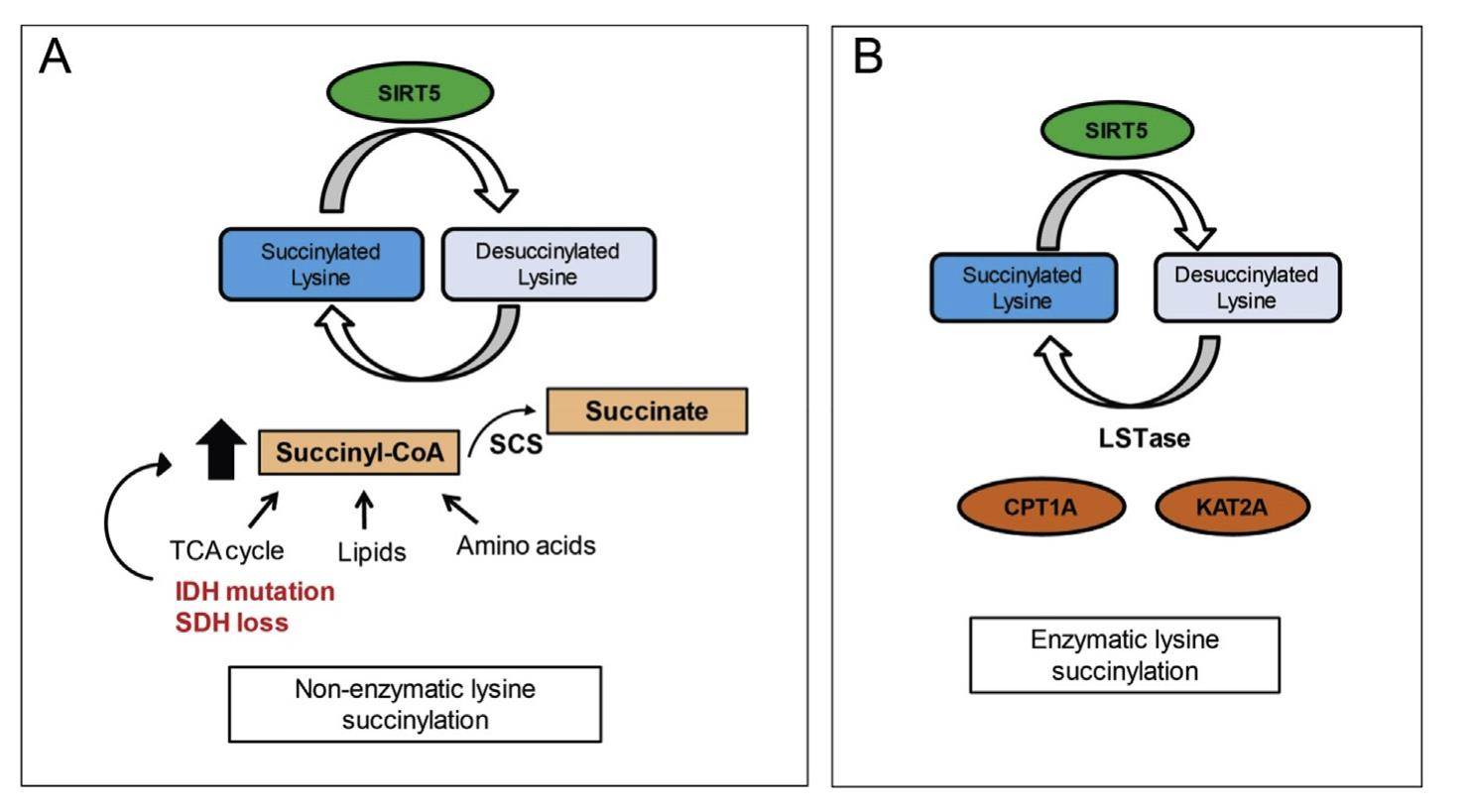
Enzymatic and metabolic regulation of lysine succinylation


Lysine succinylation (Ksucc), defined as a transfer of a succinyl group to a lysine residue of a protein, is a newly identified protein post-translational modification1-3. This chemical modification is reversible, dynamic, and evolutionarily conserved4 where it has been comprehensively studied in both bacterial and mammalian cells5-7. Numerous proteins involved in the regulation of various cellular and biological processes have been shown to be heavily succinylated5e7. Emerging clinical data provides evidence that dysregulation of Ksucc is correlated with the development of several diseases, including cardiovascular diseases and cancer7e9. Therefore, an in-depth understanding of Ksucc and its regulation is important not only for understanding its physiological function but also for developing drug therapies and targeted agents for these diseases. In this review, we highlight some of the recent advances in understanding the role of Ksucc and desuccinylation under physiological and pathological conditions.
